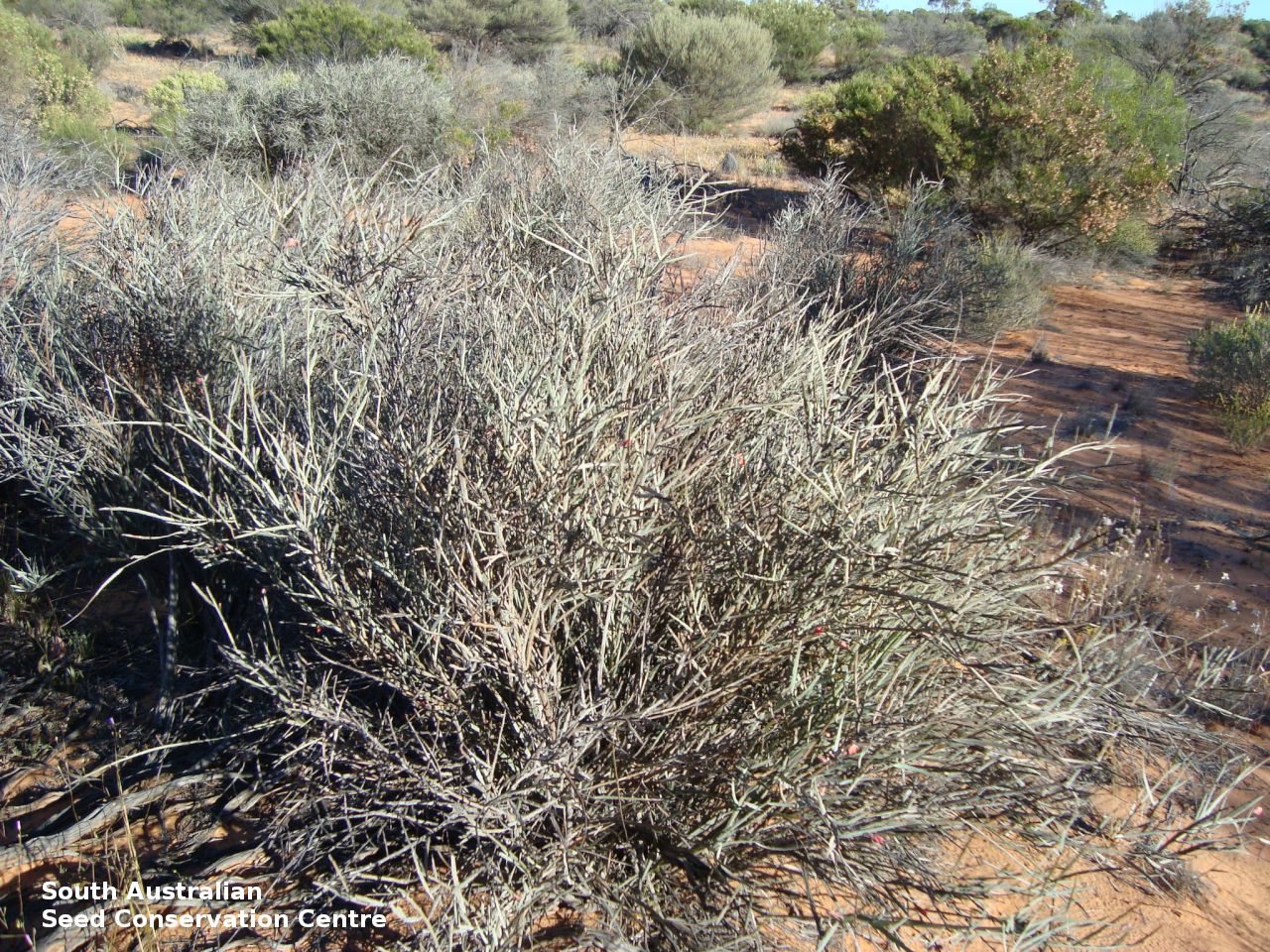
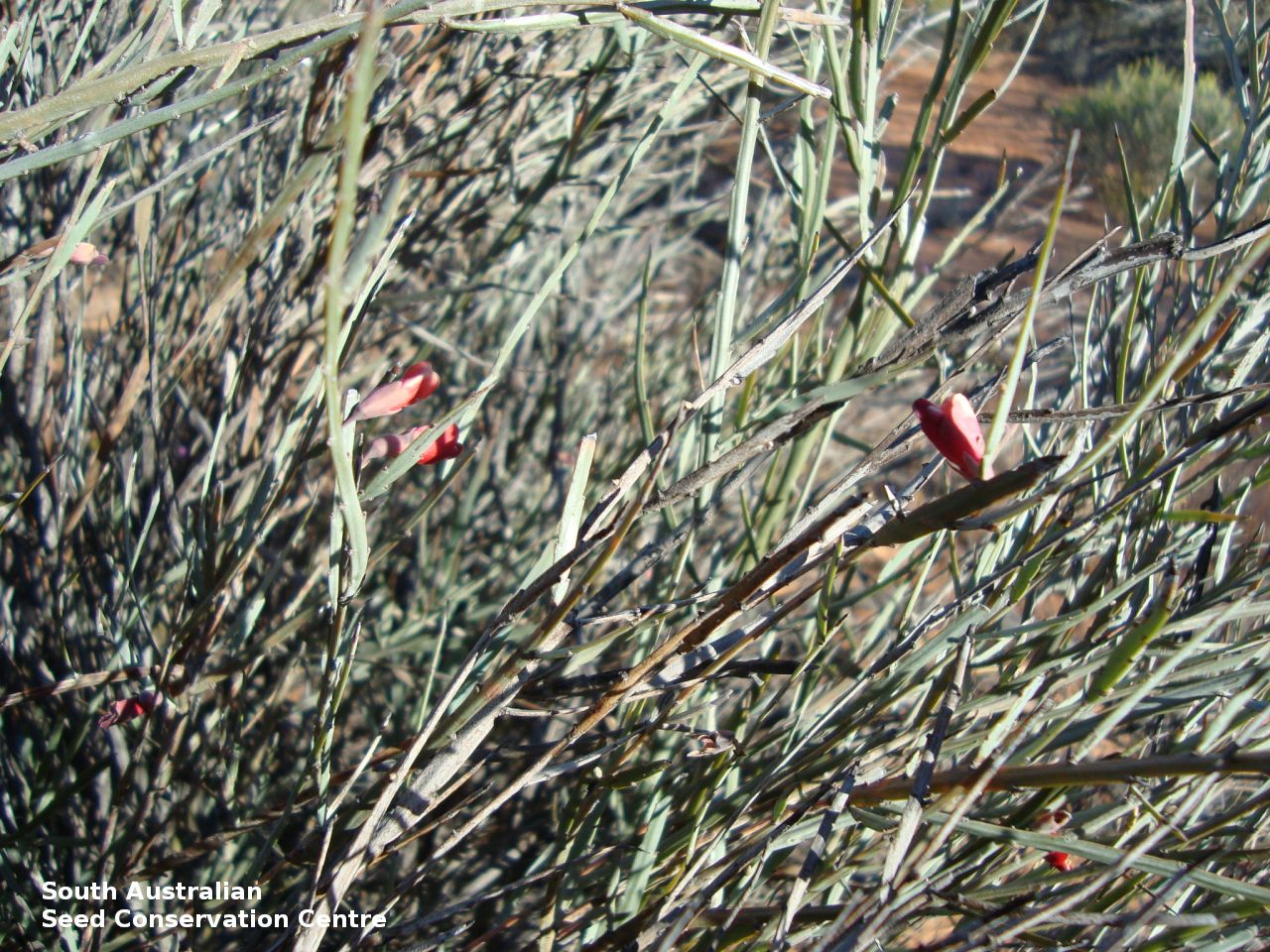
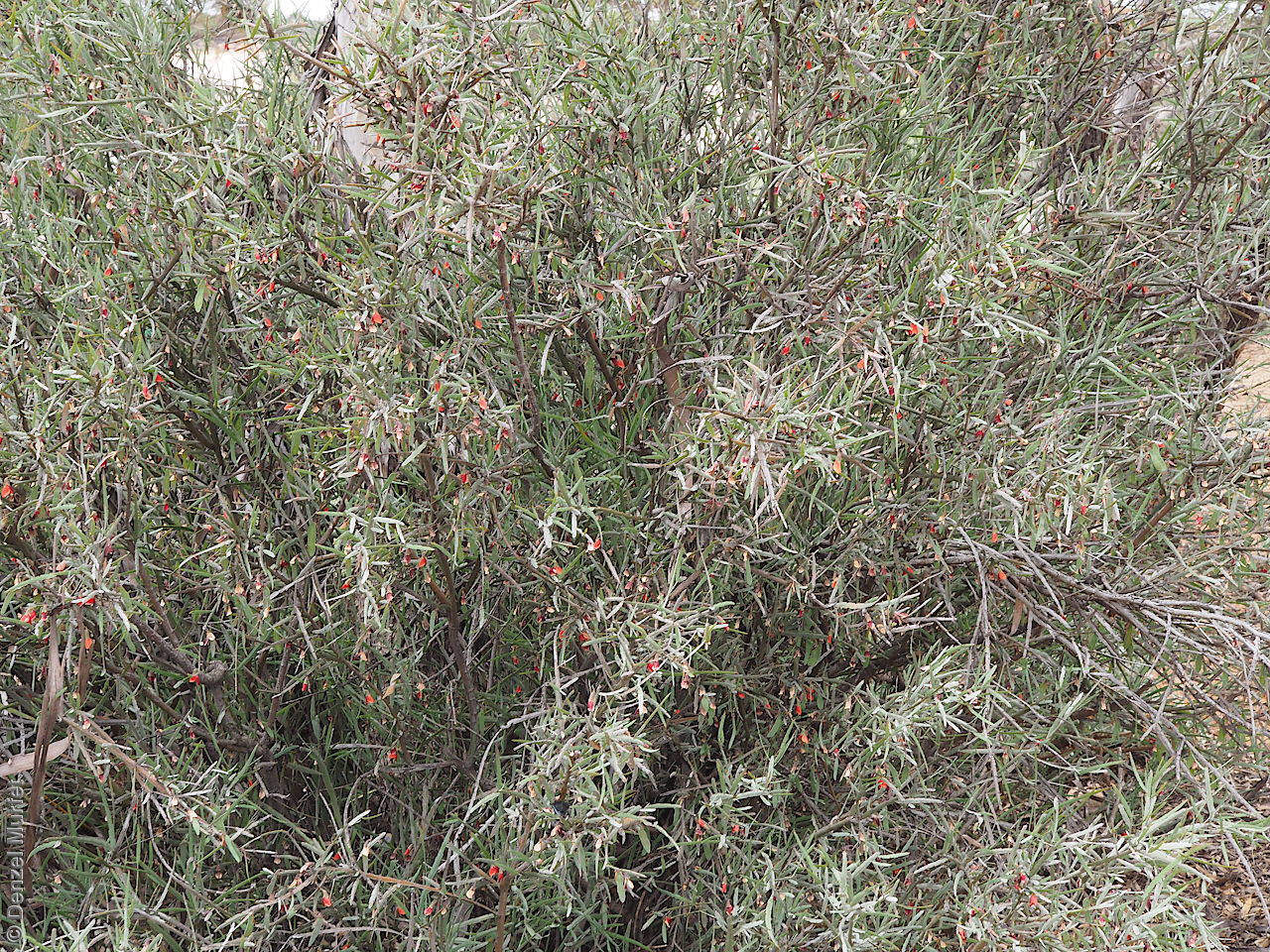
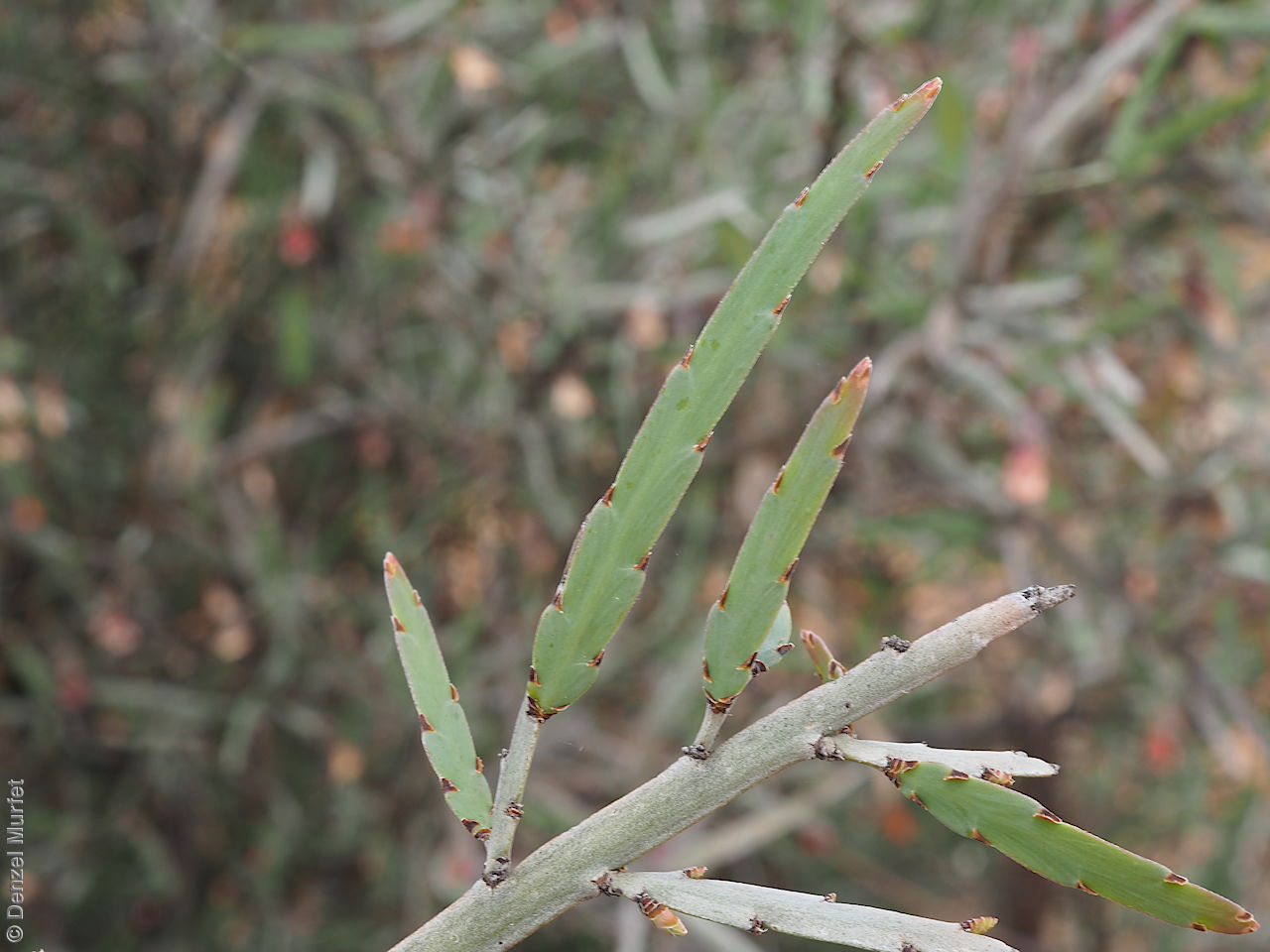
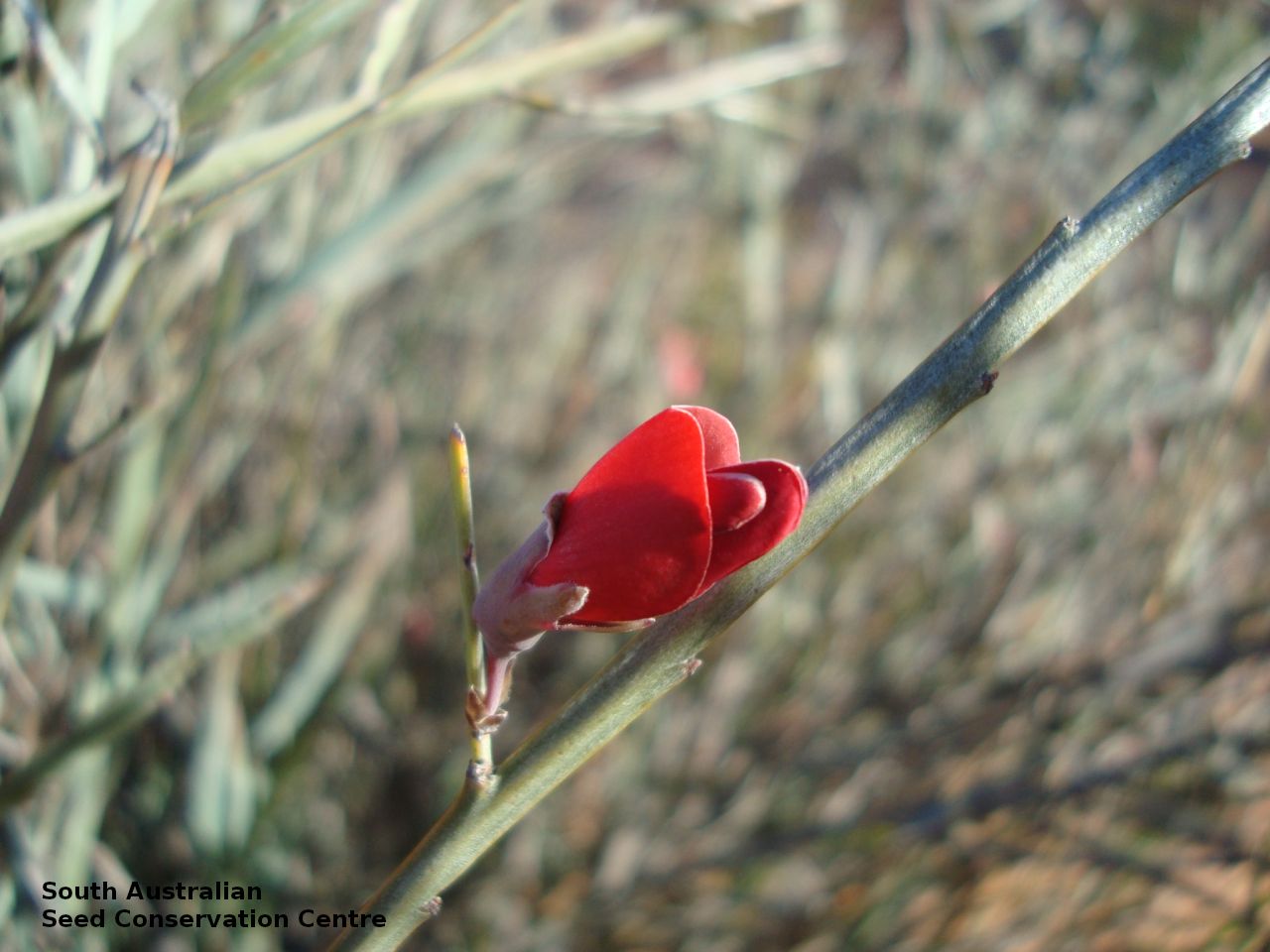
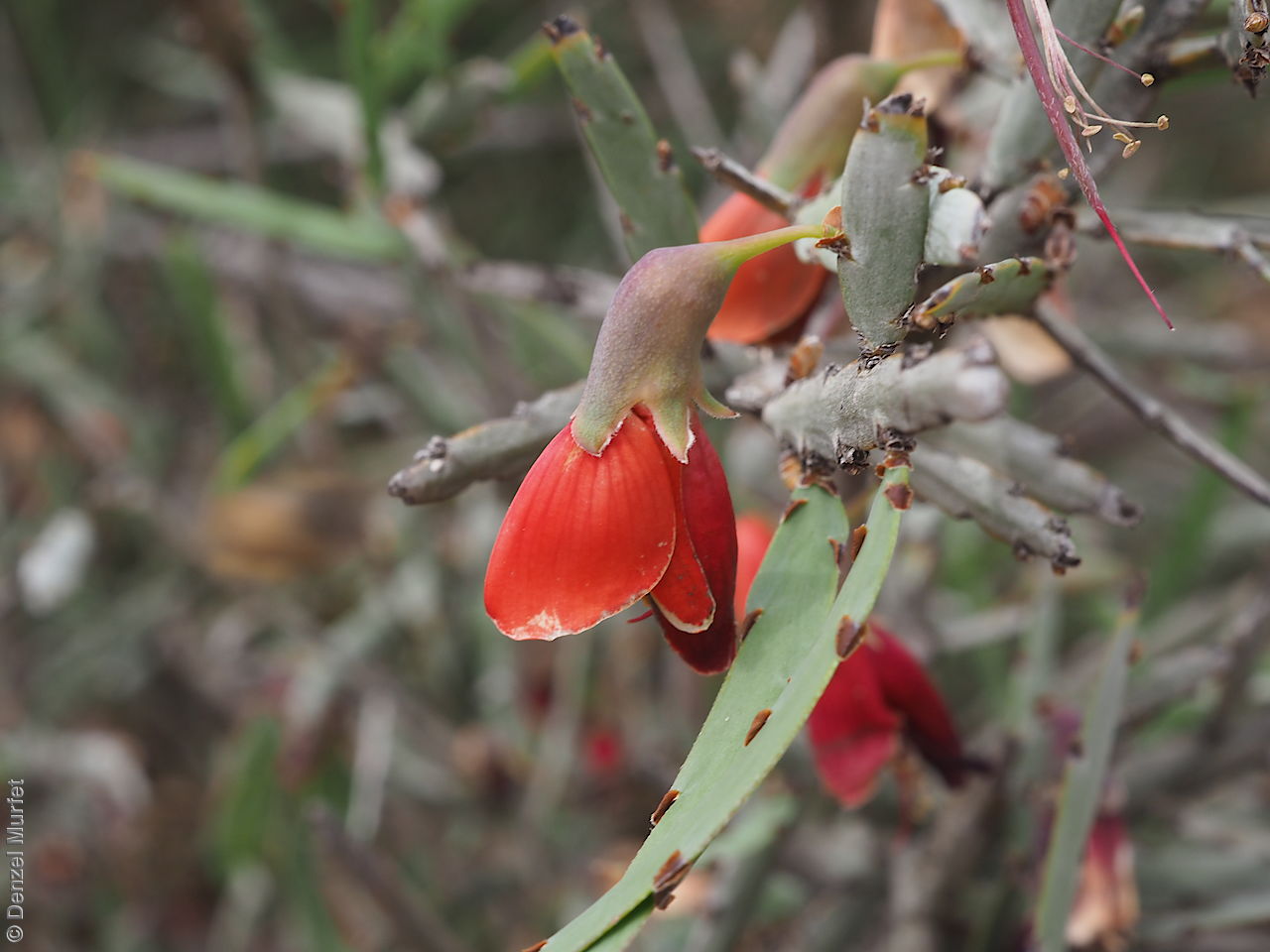
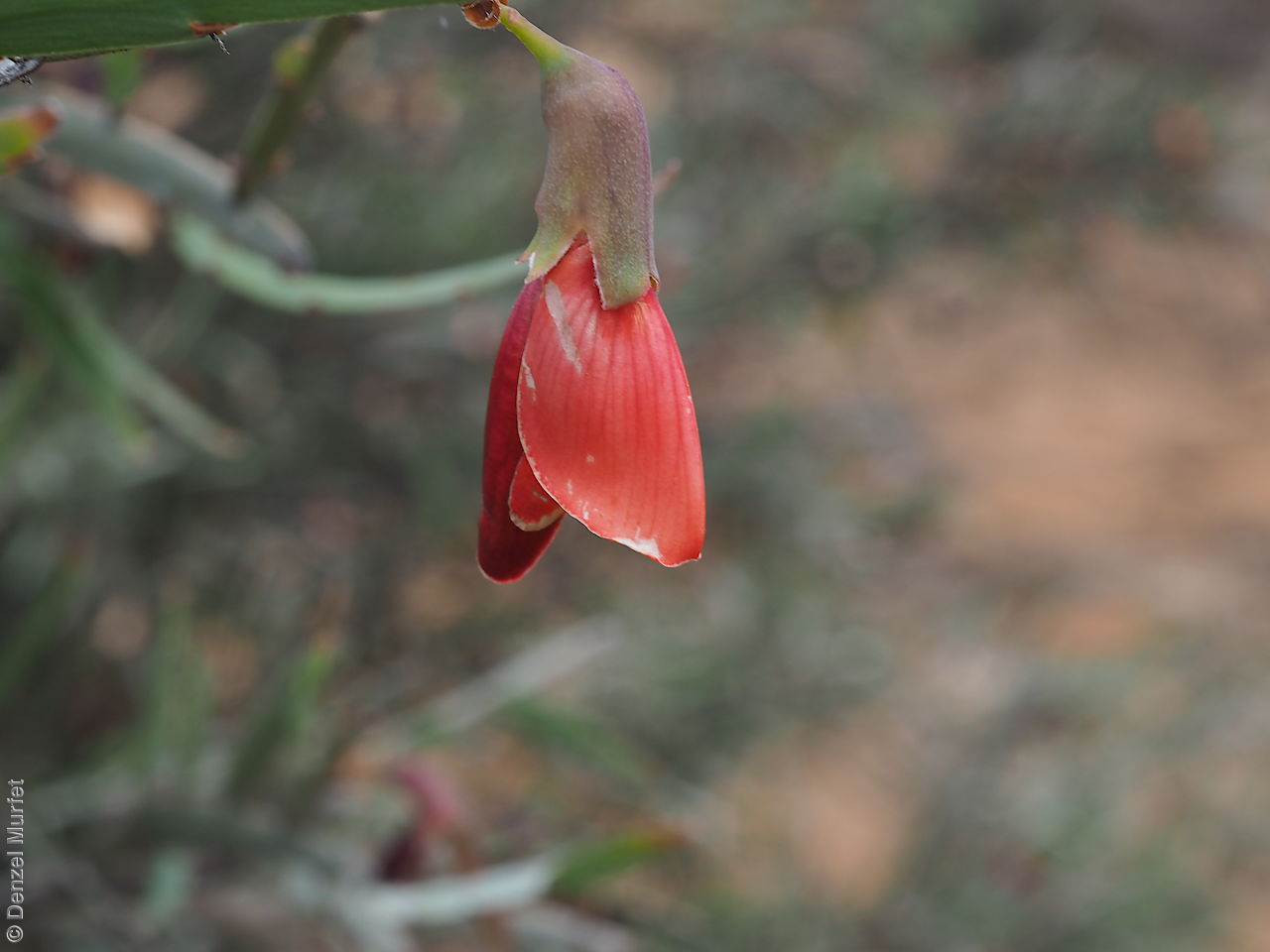
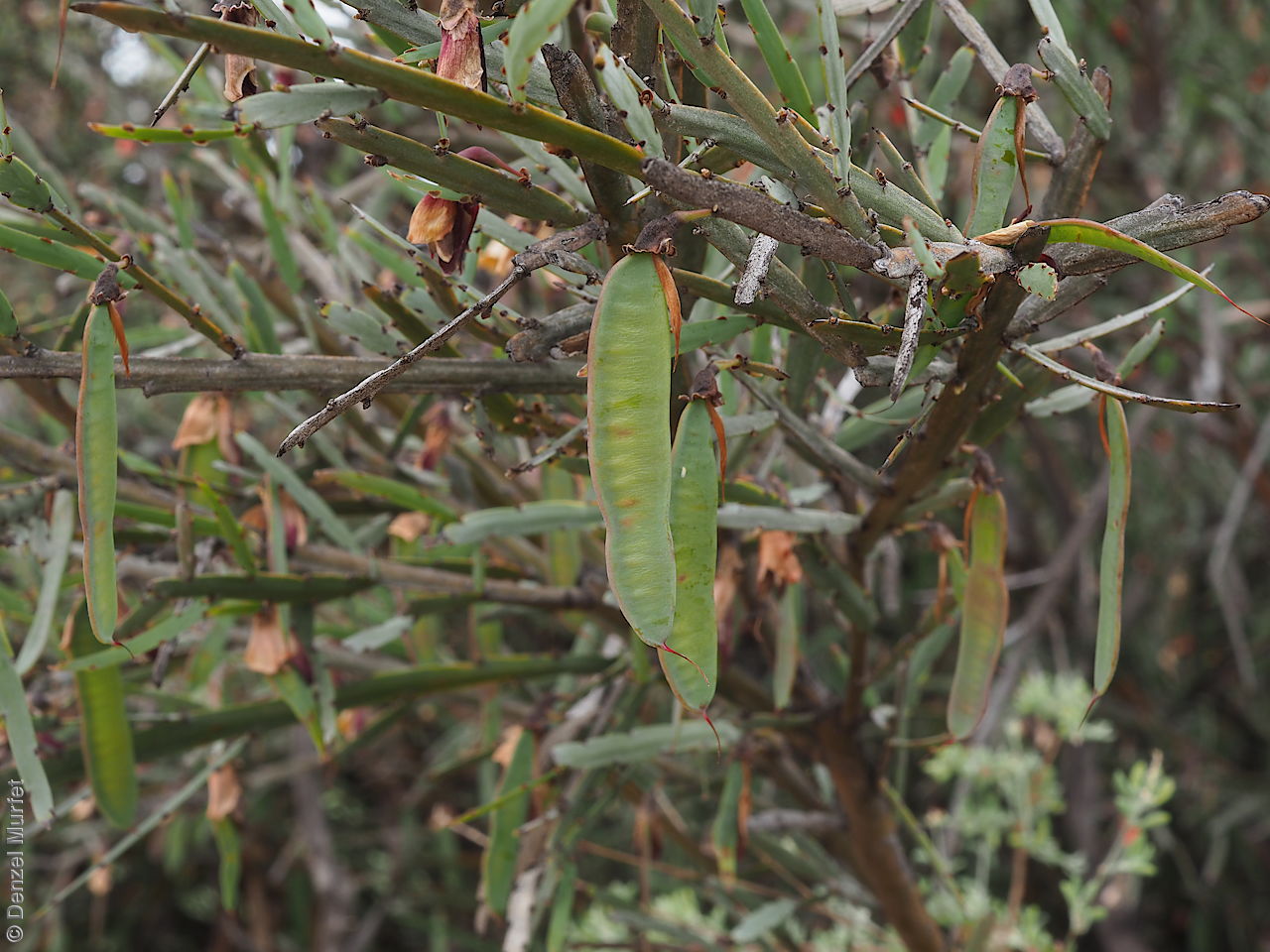
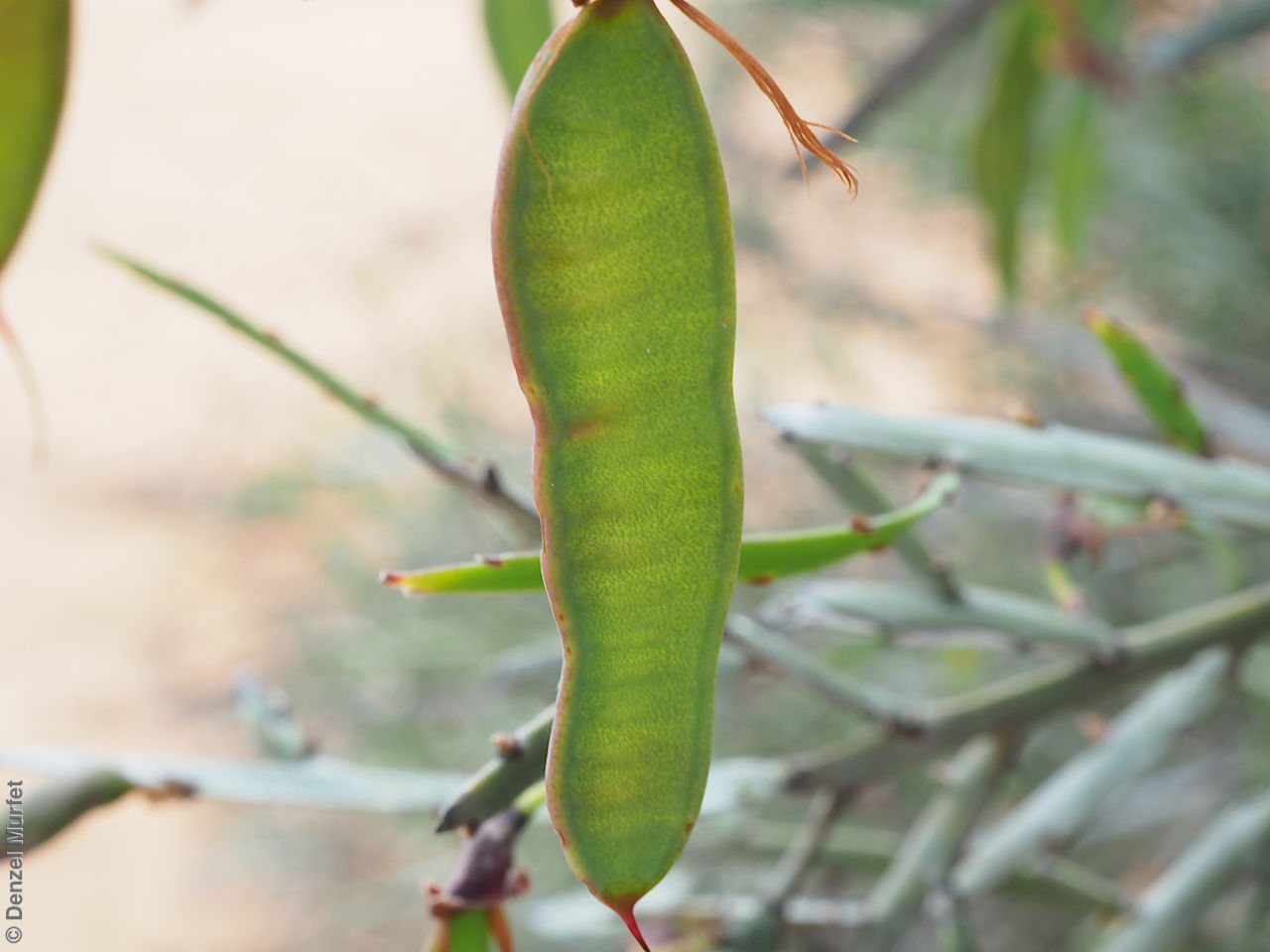
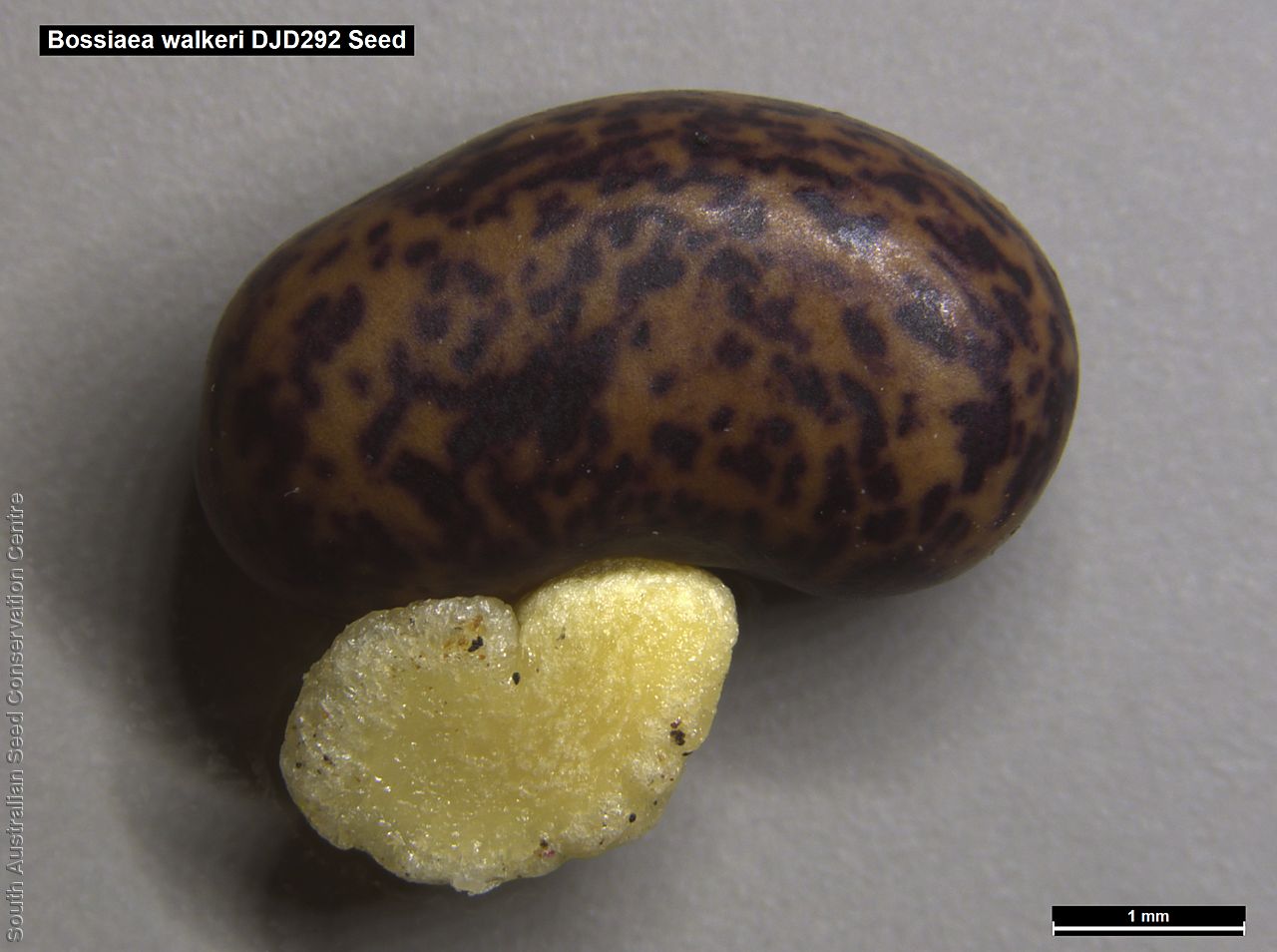
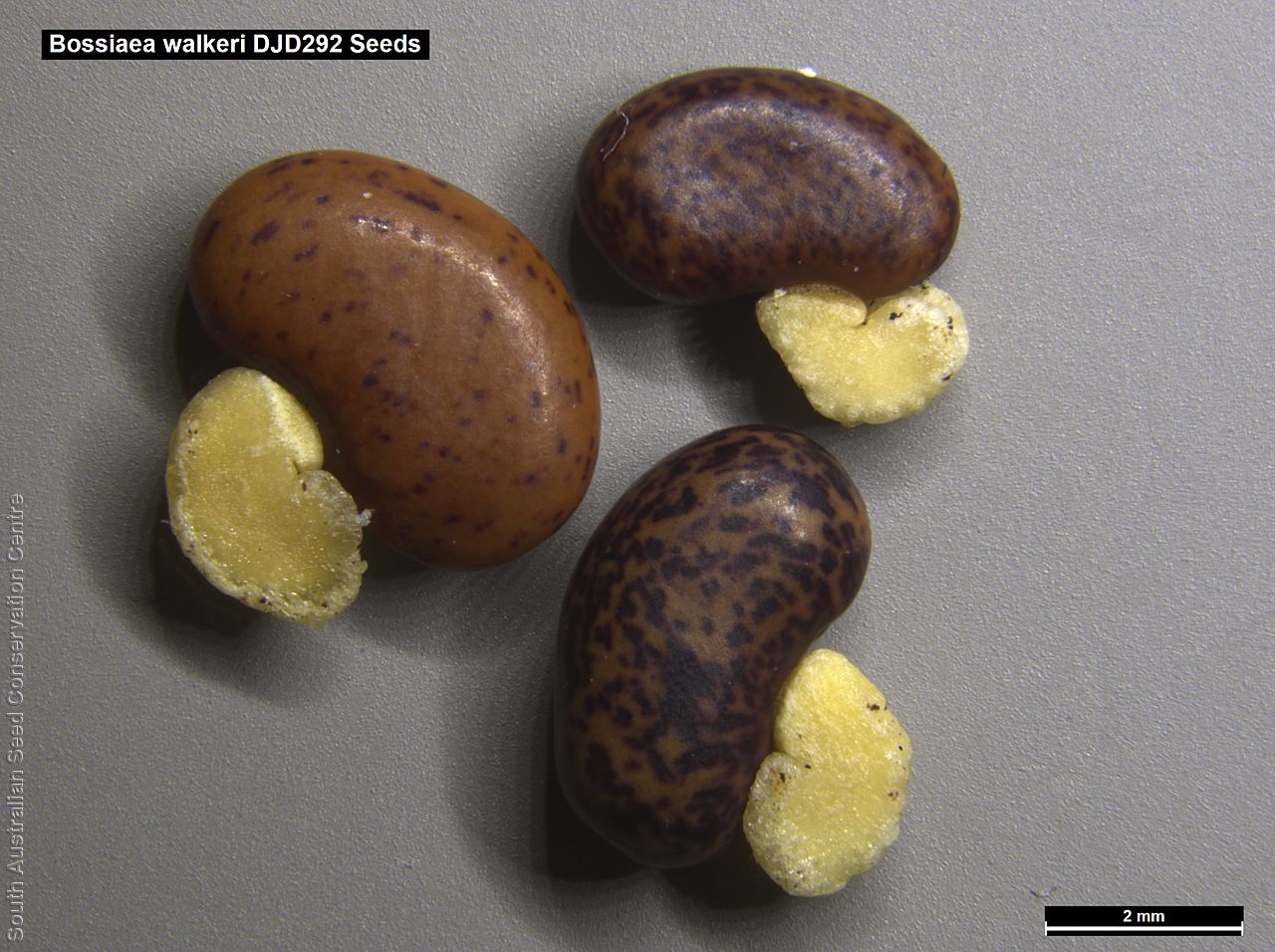
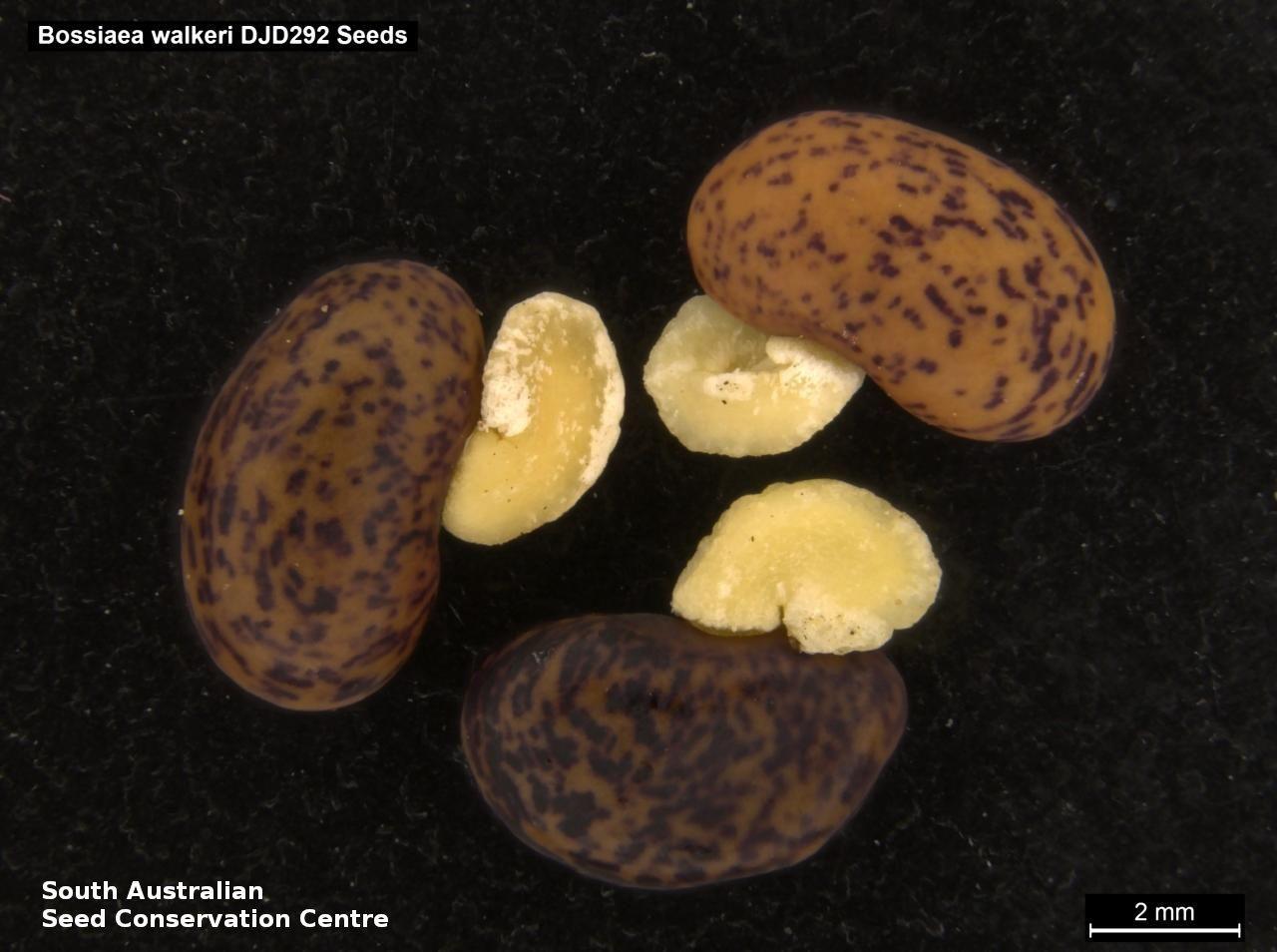

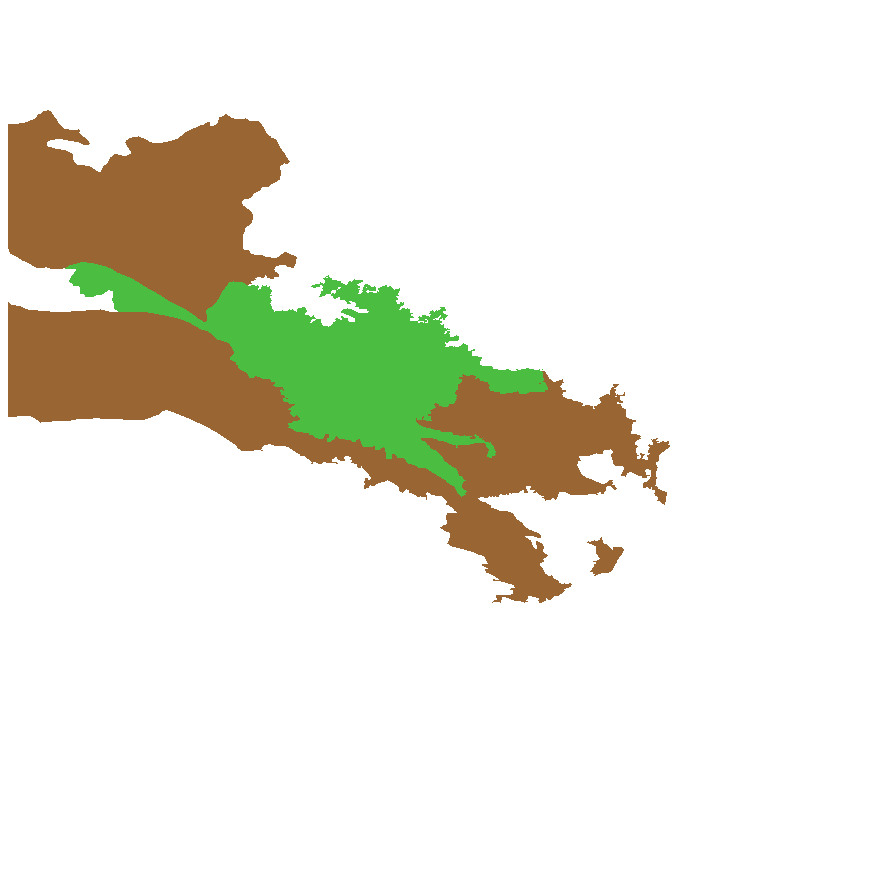
Botanical art
Common names
Cactus Bossiaea
Cactus Pea
Etymology
Bossiaea named after Joseph Hugues Boissieu (de) La Martiniere, (1758-1788), a French physician, biologist and botanist. Walkerii named after Alex Walker, who collected the type specimen from the Peel Range in New South Wales.
Distribution and status
Found in the arid part of South Australia, on the upper Eyre Peninsula across the north-west to border, in mallee woodland in red sandy soils. Also found in Western Australia, New South Wales and Victoria. Native. Common in South Australia. Uncommon in Victoria. Common in the other states.
Herbarium regions: North Western, Nullarbor, Gairdner-Torrens, Eyre Peninsula, Murray
NRM regions: Eyre Peninsula, South Australian Arid Lands, South Australian Murray-Darling Basin
AVH map: SA distribution map (external link)
Plant description
Glabrous leafless shrub to 2 m high, lower stems cylindric, upper stems flattened with winged-like organ to 10 mm wide, rigid, glabrous, smooth. Leaves commonly lacking, if developed broadly elliptic to more or less orbicular to 20 mm long. Flowers deep red, usually solitary, large to 20 mm long, in lateral notches. Flowering between July and October. Fruits are reddish brown flatten oblong pod to 60 mm long and 10 mm wide. Seeds are mottled brown, reniform seed to 6 mm long and 4 mm wide, with a large curved pale yellow aril on one side. Seed embryo type is bent.
Seed collection and propagation
Collect seeds between November and December. Collect mature pods, those drying off, turning brown and contain dark hard seeds inside. Place the pods in a tray and leave to dry for 1 to 2 weeks. Then rub the pods gently with a rubber bung to dislodge the seeds. Use a sieve to separate the seeds from unwanted material. Store the seeds with a desiccant such as dried silica beads or dry rice, in an air tight container in a cool and dry place. From one collection, the seed viability was average, at 75%. This species has physical dormancy that needs to be overcome for the seed to germinate (e.g. nicking or softening the seed coat).
| Location | No. of seeds (weight grams) | Number of plants | Date collected | Collection number Collection location | Date stored | % Viability | Storage temperature |
|---|---|---|---|---|---|---|---|
| BGA MSB | 2,900 (29.87 g) 2,900 (29.87 g) | 100+ | 5-Dec-2005 | DJD292 Eyre Peninsula | 7-Aug-2006 | 75% | -18°C |
Number of plants: This is the number of plants from which the seeds were collected.
Collection location: The Herbarium of South Australia's region name.
% Viability: Percentage of filled healthy seeds determined by a cut test or x-ray.